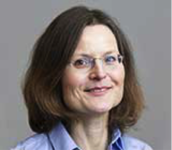Short Courses
The short courses will be held on Thursday, May 25, 2017.
Dr. Xiao-Hua (Andrew) Zhou and Dr. Joseph Ibrahim will each give a full-day (6 hours) short course from 8:30–5:00.
Dr. Joanna Shih will give a 1/2 day course in the morning from 8:30–12:00; Drs. Mitchell Gail and Ruth Pfeiffer will give a 1/2 day course in the afternoon from 1:30–5:00.
Additionally, the following breaks are scheduled:
- Morning break 10:00am–10:30am
- Lunch 12:00pm–1:30pm
- Afternoon break 3:00pm–3:30pm
- Dr. Joanna Shih, Biometric Research Program, National Cancer Institute
“Modeling Clustered Failure Time Data with Application to Family/Genetic Studies”
(1/2-day course: morning) - Dr. Mitchell Gail and Dr. Ruth Pfeiffer, Division of Cancer Epidemiology and Genetics, National Cancer Institute
“Absolute Risk and Applications in Disease Prevention”
(1/2-day course: afternoon) - Dr. Xiao-Hua (Andrew) Zhou, University of Washington
“Statistical Methods in Diagnostic and Predictive Medicine”
(Full-day course) - Dr. Joseph Ibrahim, University of North Carolina at Chapel Hill
“Applied Bayesian Survival Analysis”
(Full-day course)
“Modeling Clustered Failure Time Data with Application to Family/Genetic Studies”
Dr. Joanna Shih, Biometric Research Program, National Cancer Institute
1/2 day course: morning
Clustered failure time data arise when a sampling unit contains a cluster of multiple, possibly correlated failure times. The sampling unit may be an individual at risk of multiple failures or a cluster of multiple individuals such as twins and family. This short course is aiming to provide an overview of modeling approaches and analysis methods for clustered failure times with focus on family study data. The first part of the course gives an overview of marginal and conditional approaches for modeling clustered failure time data, followed by estimation procedures and model assessment. The second part will cover extension of these modeling approaches to the setting of case-control family studies in which disease history and age-at-onset information for family members of the case-control study participants (probands) are collected. Inference procedures for relative risk, cumulative risk and residual familial aggregation under both approaches will be presented. In the case where genotype information is collected from probands only, estimating strategies for genotype-specific risk accounting for residual familial correlation will also be presented. At the end of the course, recent and ongoing research in this area will be briefly discussed. Throughout the course methods will be illustrated using data collected from a veteran twin study and the Washington Ashkenazi Study.
Dr. Joanna Shih, Biometric Research Program, National Cancer Institute
 Dr. Joanna Shih is now a mathematical statistician at NCI/NIH, Biometric Research Program, Division of Cancer Treatment and Diagnosis. She received her Ph.D in Biostatistics at University of Minnesota. Her research interests include Clinical trials, survival analysis, familial association analysis, and diagnostic accuracy.
Dr. Joanna Shih is now a mathematical statistician at NCI/NIH, Biometric Research Program, Division of Cancer Treatment and Diagnosis. She received her Ph.D in Biostatistics at University of Minnesota. Her research interests include Clinical trials, survival analysis, familial association analysis, and diagnostic accuracy.
“Absolute Risk: Methods and Applications in Clinical Management and Public Health”
Dr. Mitchell Gail and Dr. Ruth Pfeiffer, Division of Cancer Epidemiology and Genetics, National Cancer Institute
1/2 day course: afternoon
The course defines absolute risk, the probability of developing a specific disease, over a specified time interval, in the presence of competing risks. Covariates are introduced for individualizing risk projections either via cause-specific hazard modeling or by cumulative incidence regression, and methods for estimation are presented for cohort data. For the cause specific formulation, we also present methods to estimate absolute risk and to provide confidence intervals on absolute risk projections from other study designs, including case-cohort and nested case-control studies, or by combining population-based case-control data with registry data on age-specific incidence rates. The course will provide a basis for the development, evaluation and use of models of absolute risk in clinical and public health applications. The course is presented at a level appropriate for statistics or biostatistics master’s students, or epidemiologists and medical researchers who have basic knowledge of statistics, epidemiologic designs, and survival analysis.
Dr. Mitchell Gail, Division of Cancer Epidemiology and Genetics, National Cancer Institute
 Dr. Gail received an M.D. from Harvard Medical School in 1968 and a Ph.D. in statistics from George Washington University in 1977. He joined NCI in 1969, and served as chief of the Biostatistics Branch from 1994 to 2008. Dr. Gail is a Fellow and former President of the American Statistical Association, a Fellow of the American Association for the Advancement of Science, an elected member of the American Society for Clinical Investigation, and an elected member of the National Academy of Medicine of the National Academy of Sciences. He has received the Spiegelman Gold Medal for Health Statistics, the Snedecor Award for applied statistical research, the Howard Temin Award for AIDS Research, the NIH Director’s Award, the PHS Distinguished Service Medal, and the Nathan Mantel Lifetime Achievement Award, and the AACR - American Cancer Society Award for Research Excellence in Cancer Epidemiology and Prevention.
Dr. Gail received an M.D. from Harvard Medical School in 1968 and a Ph.D. in statistics from George Washington University in 1977. He joined NCI in 1969, and served as chief of the Biostatistics Branch from 1994 to 2008. Dr. Gail is a Fellow and former President of the American Statistical Association, a Fellow of the American Association for the Advancement of Science, an elected member of the American Society for Clinical Investigation, and an elected member of the National Academy of Medicine of the National Academy of Sciences. He has received the Spiegelman Gold Medal for Health Statistics, the Snedecor Award for applied statistical research, the Howard Temin Award for AIDS Research, the NIH Director’s Award, the PHS Distinguished Service Medal, and the Nathan Mantel Lifetime Achievement Award, and the AACR - American Cancer Society Award for Research Excellence in Cancer Epidemiology and Prevention.
Dr. Ruth Pfeiffer, Division of Cancer Epidemiology and Genetics, National Cancer Institute
 Dr. Pfeiffer is a tenured senior investigator at the Biostatistics Branch of the Division of Cancer Epidemiology and Genetics (DCEG), National Cancer Institute (NCI). She received an M.S. degree in applied mathematics from the Technical University of Vienna, Austria, an M.A. degree in applied statistics and a Ph.D. in mathematical statistics both from the University of Maryland, College Park. At NCI she is an active collaborator on many research projects and mentors several fellows and junior investigators. Her research focuses on statistical methods for absolute risk prediction, laboratory methods and problems arising in genetic epidemiology. She is the recipient of a Fulbright Fellowship, an elected Member of the International Statistical Institute (2007), and an elected Fellow of the American Statistical Association (2013).
Dr. Pfeiffer is a tenured senior investigator at the Biostatistics Branch of the Division of Cancer Epidemiology and Genetics (DCEG), National Cancer Institute (NCI). She received an M.S. degree in applied mathematics from the Technical University of Vienna, Austria, an M.A. degree in applied statistics and a Ph.D. in mathematical statistics both from the University of Maryland, College Park. At NCI she is an active collaborator on many research projects and mentors several fellows and junior investigators. Her research focuses on statistical methods for absolute risk prediction, laboratory methods and problems arising in genetic epidemiology. She is the recipient of a Fulbright Fellowship, an elected Member of the International Statistical Institute (2007), and an elected Fellow of the American Statistical Association (2013).
“Statistical Methods in Diagnostic and Predictive Medicine”
Dr. Xiao-Hua (Andrew) Zhou, University of Washington
Full-day course
The purpose of this one-day short course is to provide a comprehensive account of statistical methods for design and analysis of diagnostic and predictive studies, including sample size calculations, estimation of the accuracy of a diagnostic test, comparison of accuracies of competing diagnostic tests, and regression analysis of diagnostic accuracy data. Additionally, some recently developed methods for correction of verification bias and imperfect reference bias and for evaluation of predictive biomarkers will be discussed.
This short course is mostly based on the instructor’ second edition of the textbook entitled “Statistical Methods in Diagnostic Medicine” by Wiley & Sons.
Dr. Xiao-Hua (Andrew) Zhou, University of Washington
 Dr. Zhou received his B.Sc. in Mathematics from Sichuan University in 1984, M.Sc. in Statistics from the University of Calgary in 1987, and Ph.D in Biostatistics from Ohio State University in 1991. He finished a two-year post-doc fellowship in Biostatistics at Harvard University in 1993. He joined the Division of Biostatistics in Indiana University School of Medicine as Assistant Professor in 1993 and was promoted to Associate Professor in 1997. In 2002, he accepted a position as the Director of Biostatistics Unit at the U.S. Department of Veterans Affairs Puget Sound Health Care System . In 2003, he was promoted to Full Research Professor in the Department of Biostatistics at University of Washington. He became a Full Professor at the University of Washington in 2005. His areas of research have primarily focused on the development of new statistical methods for health services research studies, for clinical trials with non-compliance, and for studies on the accuracy of diagnostic tests. In addition, he has been collaborating with other clinical researchers on research pertaining to health services, Autism Spectrum Disorders (ASD), and Alzheimer’s Disease (AD) since 1993.
Dr. Zhou received his B.Sc. in Mathematics from Sichuan University in 1984, M.Sc. in Statistics from the University of Calgary in 1987, and Ph.D in Biostatistics from Ohio State University in 1991. He finished a two-year post-doc fellowship in Biostatistics at Harvard University in 1993. He joined the Division of Biostatistics in Indiana University School of Medicine as Assistant Professor in 1993 and was promoted to Associate Professor in 1997. In 2002, he accepted a position as the Director of Biostatistics Unit at the U.S. Department of Veterans Affairs Puget Sound Health Care System . In 2003, he was promoted to Full Research Professor in the Department of Biostatistics at University of Washington. He became a Full Professor at the University of Washington in 2005. His areas of research have primarily focused on the development of new statistical methods for health services research studies, for clinical trials with non-compliance, and for studies on the accuracy of diagnostic tests. In addition, he has been collaborating with other clinical researchers on research pertaining to health services, Autism Spectrum Disorders (ASD), and Alzheimer’s Disease (AD) since 1993.
“Applied Bayesian Survival Analysis”
Dr. Joseph Ibrahim, University of North Carolina at Chapel Hill
Full-day course
This course is split into two parts. The first part covers Bayesian analysis of time-to-event data. We will examine in detail parametric models, semi-parametric models, and cure rate models. Semiparametric models include piecewise constant hazard regression models, gamma process models, and Bayesian analysis using Cox’s partial likelihood. For each of these settings, we will discuss formulation of the likelihood, priors, and analysis using WinBUGS, R, and SAS. Detailed case studies will be examined using these models. We will also discuss informative prior elicitation based on historical data, model assessment, and goodness of fit. In the second part of the course, we will focus on Bayesian clinical trial design with time-to-event data. We will develop fundamental notions of Bayesian type I error and power that can be applied to any statistical model,, with a focus on survival models. We will discuss Bayesian design for phase 3 clinical trials for time-to-event data using the Cox model, cure rate model, and frailty models for recurrent events. We will also examine Bayesian design for meta-analysis models used to analyze time-to-event data. The Bayesian designs presented are based on case studies encountered in our collaborations. . SAS and R software will be demonstrated for implementing these Bayesian designs.
Dr. Joseph Ibrahim, University of North Carolina at Chapel Hill
 Dr. Joseph Ibrahim, Alumni Distinguished Professor of biostatistics, is principal investigator of two National Institutes of Health (NIH) grants for developing statistical methodology related to cancer and genomics research. Dr. Ibrahim is also the Director of the Biostatistics and Data Management Core at UNC’s Lineberger Comprehensive Cancer Center. Dr. Ibrahim is currently the biostatistical core leader for the NIH-funded Breast Cancer Specialized Programs of Research Excellence (SPORE) project. He is also co-PI of the statistical P01 grant titled “Statistical Methods in Cancer Clinical Trials.” Dr. Ibrahim’s areas of research focus are Bayesian inference, missing data problems, medical imaging analysis and genomics.
Dr. Joseph Ibrahim, Alumni Distinguished Professor of biostatistics, is principal investigator of two National Institutes of Health (NIH) grants for developing statistical methodology related to cancer and genomics research. Dr. Ibrahim is also the Director of the Biostatistics and Data Management Core at UNC’s Lineberger Comprehensive Cancer Center. Dr. Ibrahim is currently the biostatistical core leader for the NIH-funded Breast Cancer Specialized Programs of Research Excellence (SPORE) project. He is also co-PI of the statistical P01 grant titled “Statistical Methods in Cancer Clinical Trials.” Dr. Ibrahim’s areas of research focus are Bayesian inference, missing data problems, medical imaging analysis and genomics.

